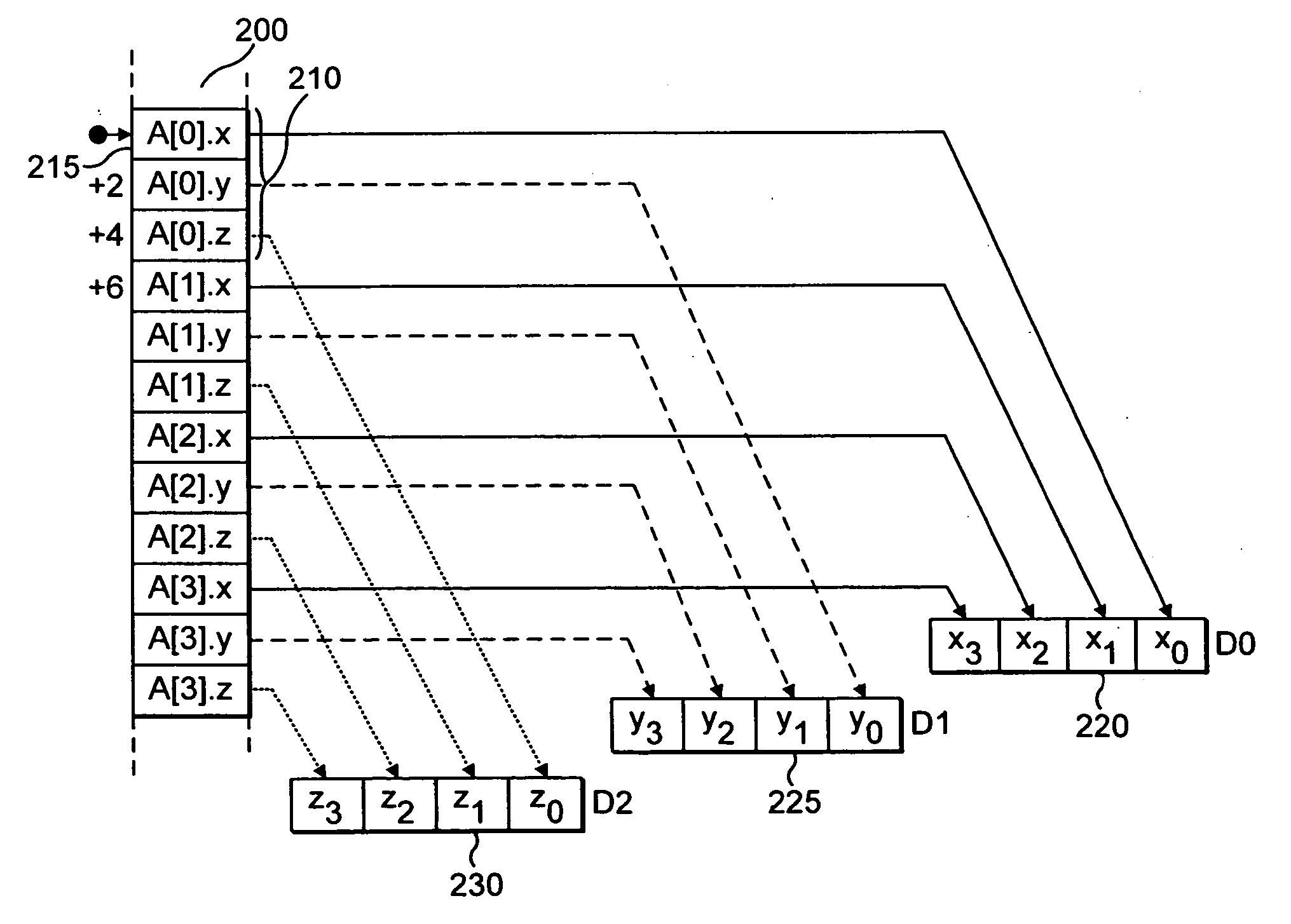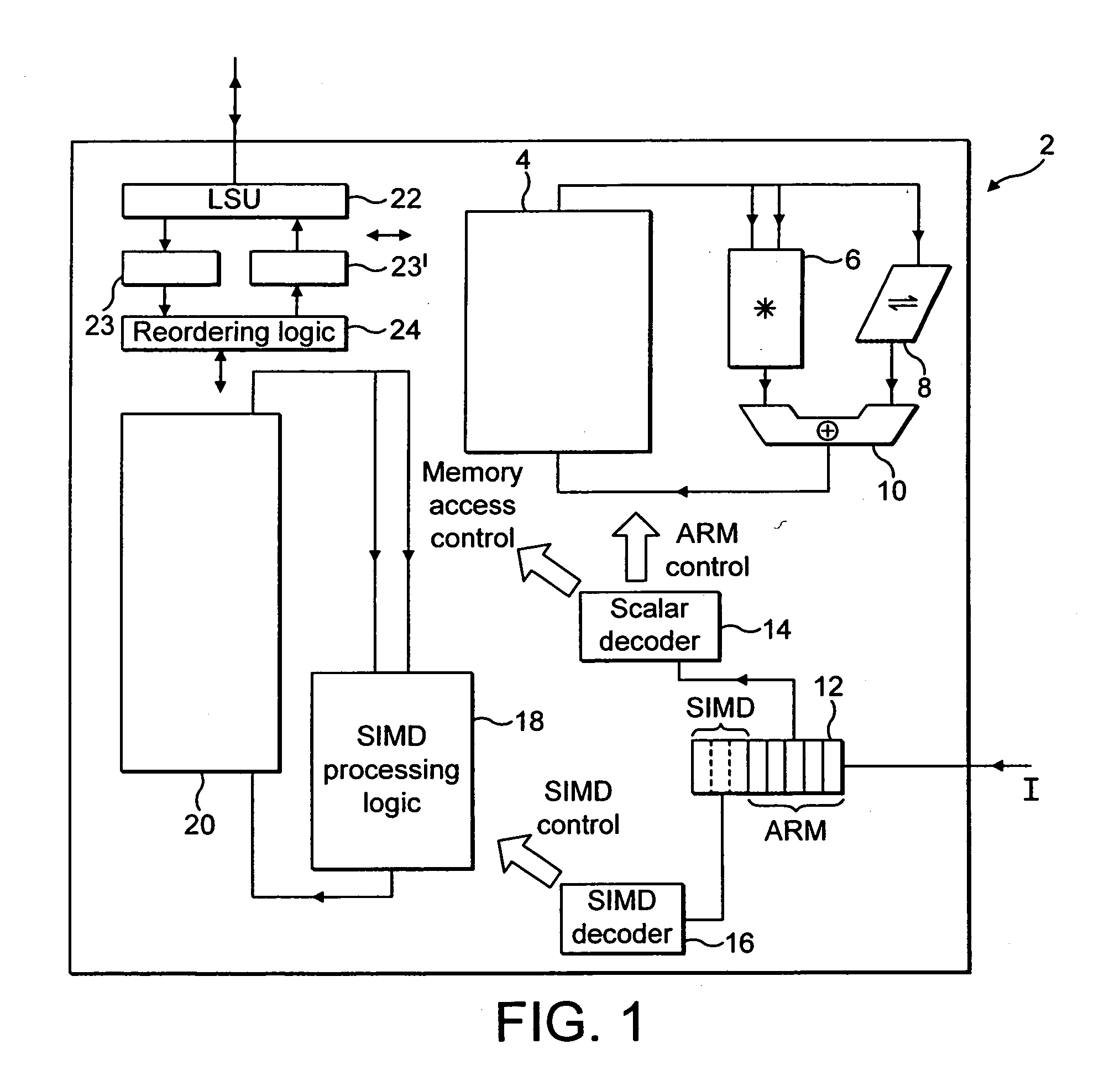Aliasing data processing registers
a data processing register and register technology, applied in the field of data processing systems, can solve the problems of reducing the benefits achieved by simd operation, and achieve the effect of simplifying and speeding up the decoding of the register field
- Summary
- Abstract
- Description
- Claims
- Application Information
AI Technical Summary
Benefits of technology
Problems solved by technology
Method used
Image
Examples
Embodiment Construction
[0090]FIG. 1 schematically illustrates a data processing system (integrated circuit) 2 incorporating both a scalar data processing functionality and a SIMD data processing functionality. The scalar data processing portion can be considered to be a standard ARM processor core incorporating a scalar register data store 4, a multiplier 6, a shifter 8, an adder 10, an instruction pipeline 12 and a scalar decoder 14 as well as many other circuit elements which have not, for the sake of clarity, been illustrated. In operation, such a scalar processor core stores fixed length 32-bit data values within the scalar register data store 4 and manipulates these using the multiplier 6, shifter 8 and adder 10 under control of data processing instructions passed along the instruction pipeline 12 and supplied to the scalar decoder 14. The scalar decoder 14 produces control signals which control the operation of the scalar processing elements in a conventional way.
[0091] As illustrated in FIG. 1 the...
PUM
 Login to View More
Login to View More Abstract
Description
Claims
Application Information
 Login to View More
Login to View More - R&D
- Intellectual Property
- Life Sciences
- Materials
- Tech Scout
- Unparalleled Data Quality
- Higher Quality Content
- 60% Fewer Hallucinations
Browse by: Latest US Patents, China's latest patents, Technical Efficacy Thesaurus, Application Domain, Technology Topic, Popular Technical Reports.
© 2025 PatSnap. All rights reserved.Legal|Privacy policy|Modern Slavery Act Transparency Statement|Sitemap|About US| Contact US: help@patsnap.com



